Originally published on October 1, 2024
Nestled in free-growing grass on MacEwan’s campus stands a sculpture of a bear with her head bowed low in prayer. The sculpture, titled Mother Bear Prays for Earth Healing, rests just outside of kihêw waciston Indigenous Centre as the university’s Treaty 6 marker. The phrases, “We Are All Related” and “Treaty Six Territory” are etched into her boulder platform in Nêhiyawêwin (Cree) and English.
Close to five years ago, the renowned sculptor Stewart Steinhauer, watched from the sidelines on 109 St. as the nearly 5,600 kilogram sculpture was plucked from his trailer by a crane and settled into her resting place on campus. The sculpture was unveiled Sept. 9, 2019, on the anniversary of the 1876 Treaty 6 signing in Fort Pitt. “It was a really important day,” Terri Cardinal, MacEwan’s associate vice-president, Indigenous initiatives and engagement says. “And it was important because we were able to ensure that this was done in the most meaningful and respectful way by inviting our community members, inviting Elders, and traditional singers to really honour this sculpture and the place that it was being placed.” Thus began the sculpture’s journey of communicating to everyone on MacEwan’s campus and beyond our place in the world as treaty people.
“..the little bear floated up into the air and all of everything around us disappeared,”
Stewart Steinhauer, sculptor
Two years prior, Cardinal made the initial request to Steinhauer for the treaty marker. Early on, Stewart Steinhauer, his relative Diana Steinhauer, Cardinal, and a few others met with MacEwan’s then-president, Deborah Saucier, for a conversation on the importance of treaty and understanding treaty relationships. “The hope was that we would ensure that this sculpture was symbolised for treaty education at MacEwan University,” says Cardinal.
The Trio Behind the Sculptures
The Creator assigned Rock Grandmother and Rock Grandfather the role of helping humans to communicate. All of Stewart Steinhauer’s sculptures are a collaborative effort brought forth by his relationship with Rock Grandmother and Rock Grandfather. During ceremonial practices, what Steinhauer describes as a “portal” opens, leading to a passageway between the world of humans and that of the Grandmothers and Grandfathers. “The Grandmothers and Grandfathers have deep historical knowledge, and it is possible to actually meet with them physically in real time and to learn from them,” says Steinhauer.
“…I go into a ceremonial space and I’m with the Rock Grandmother and the Rock Grandfather, and we work together.”
Stewart Steinhauer, sculptor
Steinhauer’s Journey with Ceremony
Steinhauer was born at Saddle Lake Cree Nation within the Amiskwacīwiyiniwak (Beaver Hills) region in what colonial structures refer to as the Treaty 6 territory of Alberta. Located approximately 170 to 180 kilometres from Edmonton, Saddle Lake Cree Nation is a forced amalgamation of four bands.
Steinhauer says Cree culture had been driven underground and was kept hidden from him when he was young. “The Government of Canada had, and the Canadian society had a very explicit agenda of eliminating Indigenous peoples as a distinct society.” For more than seventy years, Canada’s Indian Act had the Potlatch Law which banned ceremony, making the act of ceremonial practice a criminal offence.
Cardinal is also from Saddle Lake Cree nation. She says, “those (ceremonies) are really the foundation of who we are. And so by removing our ceremonies, by removing our children from our communities, they knew that they would infiltrate our people. And so, that’s not living in respectful relationships with one another. That’s not ensuring that we are, you know, maintaining this respect and sharing this land peacefully.”
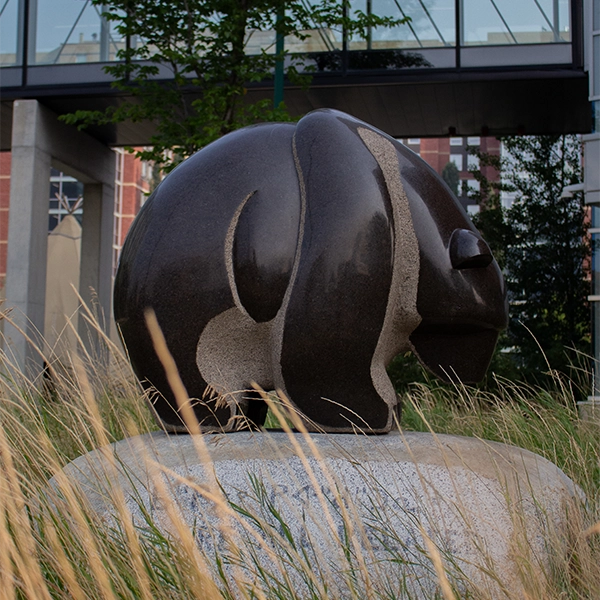
Steinhauer first started carving in the early 70’s when his first child was born. While he had never seen anyone carve, he has connections to a long history of carving in Cree culture. “…even though I had no exposure to carving stone or connection to it, the birth of my child triggered something deep in me, unknown to me. And I immediately began pursuing it, following it.”
At first, Steinhauer’s carvings were personal. Though he hadn’t realised it yet, carving was his method of healing from traumatic and cathartic experiences. After 17 years of making a living through other means, Steinhauer’s carvings were noticed by someone in the arts industry, who convinced him to begin marketing his art. He started his transition into carving specific Cree culture interpretations by fasting.
“There’s a whole cycle of ceremonies that happen throughout the course of the year…and all of those ceremonies have a component, a teaching component in them, and they teach part of the old culture,” says Steinhauer. Fasting is just one of many traditional ceremonial practices. “You’re being taught by the Grandmother and Grandfather who you are. They know you, they already know you, but you don’t know yourself. And so you have to go through that process to learn who you are,” says Steinhauer.
“Many folks don’t know or understand what treaty is.”
Terri Cardinal, MacEwan’s associate vice-president, Indigenous initiatives and engagement
When his father became ill, Steinhauer made the trip from a reserve in B.C. to Edmonton to visit him. He was in his parent’s apartment when he decided to fast, despite feeling “deeply estranged from Saddle Lake, from Indigenous culture.” He fasted for four nights, without any ceremonial protocol and was visited in what he calls a life-changing experience that pulled him back to his family, to Saddle Lake Cree Nation, and into his professional career of carving. “I was able to support myself through carving the small scale sculpture, and at the same time, I discovered this whole underground, hidden ceremonial life had come back out in the open.”
The next year, Steinhauer’s relatives welcomed him into the ceremonial circle and he partook in a fasting ceremony at Saddle Lake Cree Nation for a pipe, and the following year for a song. “Songs are like fuel that you pour into a ceremony,” he says. For his fourth year of engaging in the fasting ceremony, Steinhauer fasted to learn how to run a sweat-lodge ceremony. With each fast, Steinhauer built on his capacity to carve.
Steinhauer believes there isn’t one correct interpretation of these teachings and that people’s minds should be open to multiple interpretations.
For his fifth year of fasting, Steinhauer fasted for the right to carve a bear, a form he had never carved before. “My cousin Vincent said, ‘Well, let’s go to the mountains. Let’s do what the old people used to do. We’ll go to the Kootenay Plains and we’ll blanket fast, you know, just you and I’.” And so, they fasted alone, without a camp or Elders to guide them. During this fast, Steinhauer was visited by two bear beings not from our physical plain, one big and one little, which he describes as a profound and life-altering meeting. Steinhauer says, “..the little bear floated up into the air and all of everything around us disappeared.” All he had was the ability to observe the little bear as it slowly rolled its three dimensional form. “He was saying to me, without using language, direct communication, just look at me, this is what I look like.”
This is the image Steinhauer sees when he approaches a block of stone to carve a bear.
For the next three years, Steinhauer returned to the Kootenay Plains with his cousin to blanket fast, deepening his relationship with the Rock Grandmother and the Rock Grandfather each year.
The form of Mother Bear Prays for Earth Healing is inspired by his experience as an oskapiyos, or ceremonial helper, during a women’s pipe ceremony, where he learnt of nests of Grandmother beings in the sky that work together. Steinhauer says one of the Grandmothers called Mother Bear, “… was the one who was reminding everyone that anybody who made it to the ceremony in a circle belonged there.” Once the ceremony leader began describing her Cree prayers in English, he came to a fuller understanding of the Grandmothers. This helped him to observe Grandmother Bear’s form, and carve her.
The Materials
Much of the Earth’s crust is made of granite. As you read this, magma kilometres below the earth’s surface is slowly cooling, forming this rock. “That’s why I work with granite,” says Steinhauer, “because that’s where the Rock Grandmother and the Rock Grandfather reside. They reside in the Earth’s crust in that granite.”
Steinhauer says the granite for Mother Bear Prays for Earth Healing is billions of years old and was sourced from across the country, from Magpie, Quebec. It came in as a part of a shipment of granite used for a series of sculptures at the Calgary International Airport. The sculpture is mounted on a boulder from Creston Valley, B.C.
The Sculpting Process
Rock Grandmother and Rock Grandfather are just as involved in the carving process as Steinhauer is, if not more. As Steinhauer continued his fasts each year, he strengthened his relationship with Rock Grandmother and Rock Grandfather to the point that now, his carving is, “a direct ceremonial relationship…I go into a ceremonial space and I’m with the Rock Grandmother and the Rock Grandfather, and we work together.”
Faced with a fresh block of granite, he starts with a quick sketch of the form. From there, Steinhauer rolls the granite stone in his gravel yard as he carves, turning the stone like the little bear that came to him in a vision while fasting.
Granite is a hard material, so the sculptor uses every advantage he can, like gradually carving down into the stone. Careful attention is required for the high points, such as the ears, to not cut them out. “You can’t put it back on after you cut it off. It’s a one way trip,” he says. He has varying tools for different techniques. For instance, Steinhauer wields a handheld jackhammer/bush hammer in the finishing process to abrade the surface. “It’s quite a workout,” he says. The last step is polishing the carving. Overall, Steinhauer worked on MacEwan’s Treaty 6 marker over a period of two years.
The future of treaty education
“It’s a big uphill struggle to impress upon non-Indigenous peoples… that Indigenous peoples are real people and have real culture and that at the treaty signing, they had a real interpretation of the treaty,” says Steinhauer. “But, that interpretation has not been brought to the general Canadian consciousness yet, even though we’re this far into the so-called reconciliation moment.”
“So, there’s treaties and then there’s treaty territory,” says Cardinal. She emphasises the importance of abiding by treaty agreements and relationships, noting “the agreements that our ancestors made in relation to how we are sharing this land together.” One such agreement is the treaty right to education. A barrier to this treaty right for Indigenous peoples is the cost to apply to Universities, which is why MacEwan waived the application fee for Indigenous students this fall.
“Education is critical in making change for a future.”
Terri Cardinal, MacEwan’s associate vice-president, Indigenous initiatives and engagement
Cardinal says some folks don’t understand what treaties are. kihêw waciston offers educational events for treaty education like during their first Land Based Gathering in May. On top of this, MacEwan is now developing courses for treaty education. Education is critical in creating understanding and change for the future, says Cardinal.
Looking down the line of geologic time for Mother Bear Prays for Earth Healing, Steinhauer says, “The Rock Grandmother and the Rock Grandfather can speak directly to people without using language. And so, potentially they could be there communicating to a future human society 10,000 years from now.”
Cardinal’s junior high now has a sculpture by Steinhauer at her junior high. Today, she can see Mother Bear Prays for Earth Healing from her office in kihêw waciston. She first came to MacEwan at 18 years old and did not learn about Indigenous peoples in a positive light. “I needed to hear good things about me, too,” she says. Her hope for her children is, “that they have the experiences that I didn’t have when I went, right? And that they have the ability to learn about us from us.”
Photos by Amanda Erickson

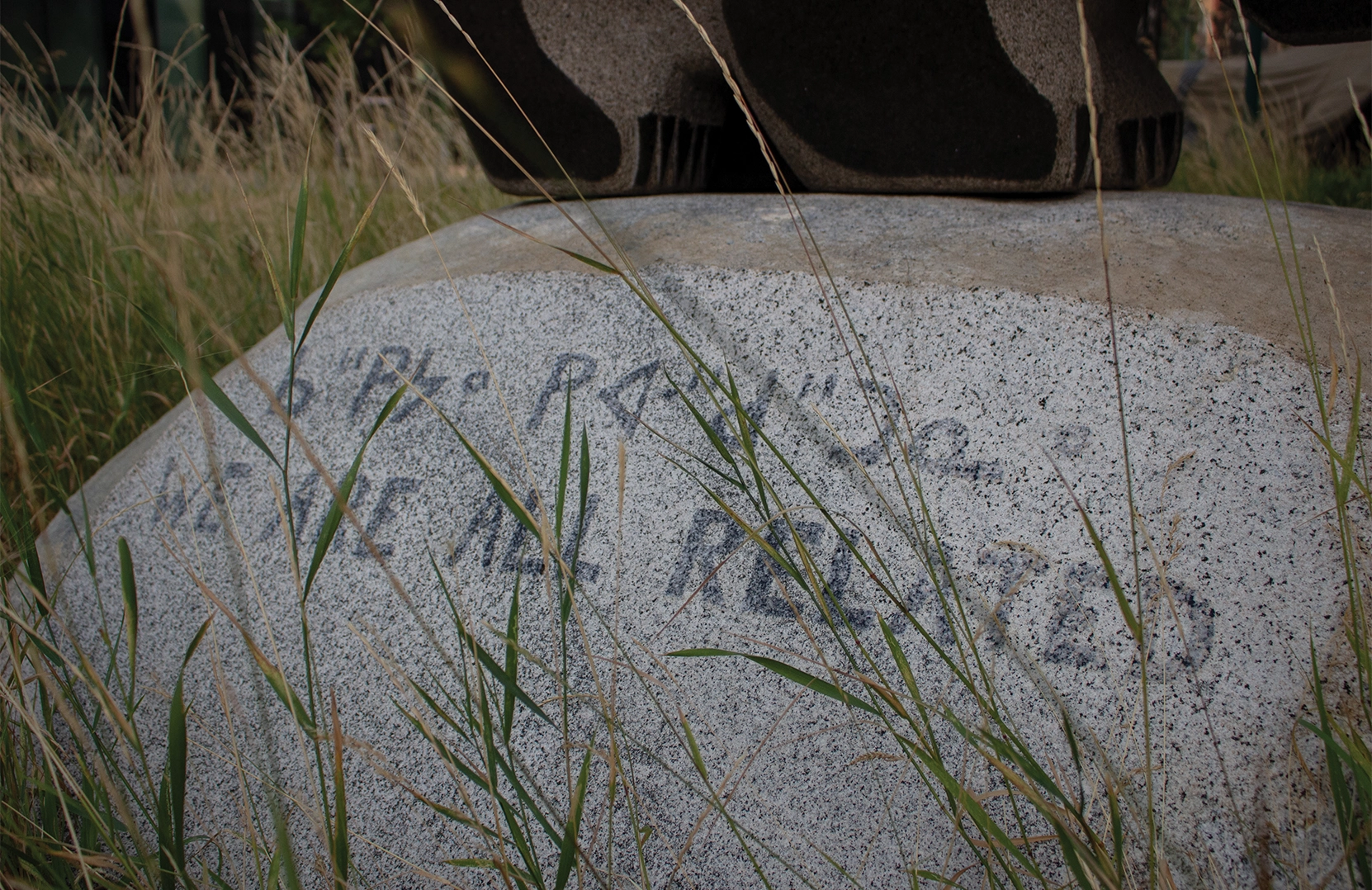
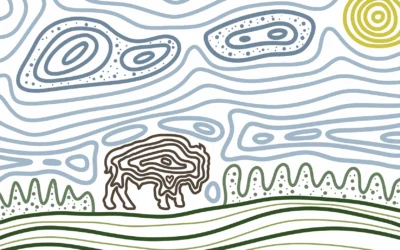
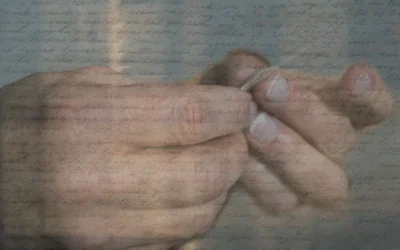
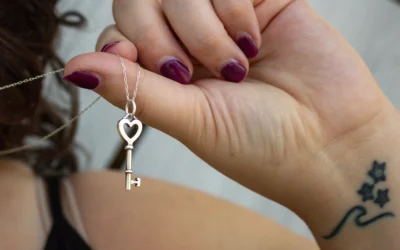
0 Comments